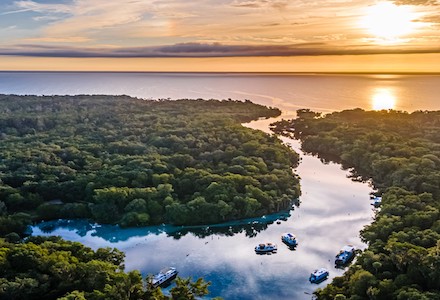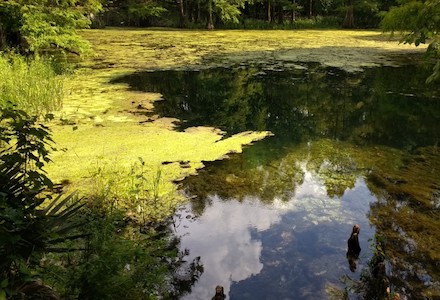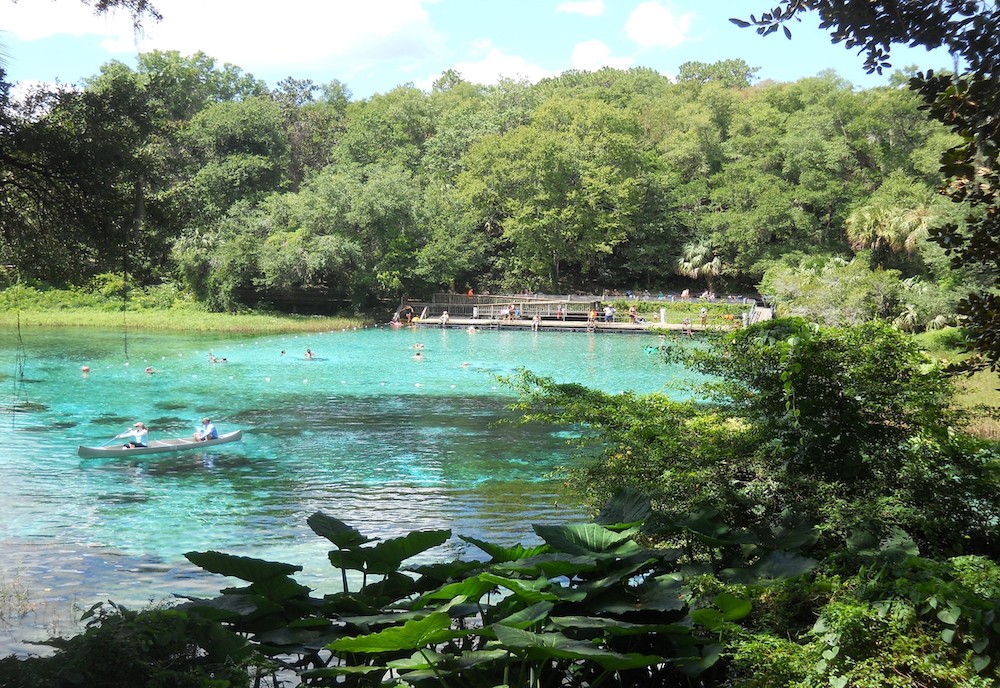By Matthew Cimitile, University Communications and Marketing
Florida is home to one of the largest concentrations of freshwater springs on the planet. More than 1,000 springs - openings in the ground where water from an underground aquifer bubbles up to the surface - dot the state’s landscape.
These natural wonders have inspired art, health treatments, roadside attractions and emotional debates over how best to utilize and protect them.
A new book from Chris Meindl, director of the USF Florida Studies Program and a professor of Geography, chronicles the unique geology, centuries of history and the current state of springs in the sunshine state. We talked with Meindl to learn more about the science behind these wonders of Florida’s environment, if Ponce de Leon ever saw a spring, much less the Fountain of Youth, and how we can balance our love of springs with protecting them.
Why a book on springs?
About 10 years ago, I heard a talk on springs from Dave DeWitt of the Southwest Florida Water Management District. I was familiar with springs from my own visits to them with family, but this talk just increased my fascination about springs and their contribution to the water resources of Florida.
That was the springboard that led me to develop a college course on Florida springs. But I never could find a comprehensive book on the topic. We used mainly guidebooks, things you would use when touring a state park. So, I set out to write one that would be informed by the latest data and research and would acknowledge what we know about springs, what we don’t know and what we thought we knew that may not be accurate.
What is a spring, geologically speaking?
Florida’s subsurface is like Swiss cheese. We have limestone geology that can be dissolved naturally by slightly acidic water. Now, Florida may look flat, but it isn’t perfectly flat. Groundwater follows the same laws that surface water does, going from places of higher to lower elevations. And springs are openings in that limestone geology at places of lower elevation where groundwater can bubble up to the surface.
Imagine someone standing on a ladder, holding up a hose with a funnel on top of it and pouring a bunch of water into it. There is someone at the bottom of the ladder that has the other end of the hose but has it pointing up. The water comes down the hose and even though the hose at the bottom is pointing up, the pressure it is under pushes the water out. That essentially is what is taking place with springs across the state.

Silver Glen Springs flowing into Lake George at sunset. Photo by Matthew David Christian Majka.
What are the environmental and economic benefits?
Select springs are very important for manatees in the winter months. Florida springs generally produce waters with temperatures in the low 70s (F). Manatees don’t like it when it gets cooler than 68 degrees, so when it cools off, they are desperate to find warmer waters. The result is some of these springs can practically be overrun with manatees in the winter.
Also, springs are more than the hole in the ground where groundwater comes out of or the spring pool where the water accumulates. For example, the Rainbow River is fed almost entirely from the Rainbow Springs, which eventually flows into the Withlacoochee River and then the Gulf of Mexico. Springs are part of this larger aquatic system and you can’t separate springs from Florida’s freshwater ecosystem.
As for the economics of springs today, mostly it is about the people they bring to parks. They are big revenue generators from the tourism they create, especially for smaller towns and rural economies. Weeki Wachee and Homosassa springs come to mind.
How have people used springs over the centuries?
They have long been gathering places for Native Americans, possibly for trade, certainly for areas to cool off. In the early 20th century, it was thought taking in the spring waters – whether bathing in them or drinking from them – would provide medicinal qualities that could relieve arthritis and gastrointestinal ailments.
Now of course today, their main uses are recreational – snorkeling and swimming in the clear waters, kayaking and fishing in the river runs they produce and hiking in the preserved parklands that surround many of them.
What are some common myths or misunderstandings about these unique Florida features?
Ponce de Leon and the fountain of youth, of course. First of all, there is no evidence that he even knew about the myth of a fountain of youth. There is also nothing in the records to suggest that he even saw a spring.
We also always like to say that spring temperatures and flow never change. But that’s not quite right. Water temperature coming out of the springs does change with the seasons, even if it is moderately. Spring flow also changes, often due to seasonal and long-term alterations in rainfall patterns.

Algal bloom impacts water quality at Peacock Springs. Photo by Chris Meindl.
So, I think it is safe to say people love springs, but maybe too much? Can you talk about the threats to springs today and potential solutions?
The main ones, or what people think are the main threats, are reduced water flow, declining water quality and overcrowding. Spring flow is the amount of water that flows out of springs. Many people blame Florida’s development and groundwater pumping for reductions in spring flow. But like I mentioned, most of the data points to long-term changes in rainfall – possibly linked to the Atlantic Multidecadal Oscillation - for declining flow issues in some springs.
Others lament declining water quality, blaming excess nitrogen that makes its way into groundwater for impacting springs via algae blooms. Excess nitrogen can come from urban and farm fertilizer or livestock operations and even natural processes. But I think there is growing skepticism around that idea, or at least it doesn’t tell the whole story, as some springs that have excess nitrogen don’t have excess algae. One hypothesis is that reduced dissolved oxygen in spring water could play a part in these conditions.
One thing for sure is that a lot of people flock to these springs year-round, for the same reasons people have been going for hundreds of years: they are beautiful places and when it’s hot, it’s the ideal place to cool down. But that has an impact on the resource, affecting water quality and vegetation.
We may need to accept a few more restrictions on our uses of these ecosystems. When Covid happened, we shut down state parks and saw lots of regrowth and recovery of submerged aquatic vegetation, which are a significant habitat in springs and play an important role in the food chain. Now seeing those positive results, some of these state parks, including really popular springs like Ichetucknee, have instituted restrictions around sensitive habitat. In the long run, I think that will be a real positive for our springs.
